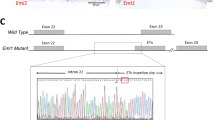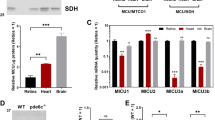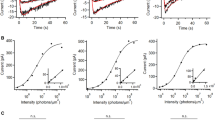Abstract
Daytime vision is mediated by retinal cones, which, unlike rods, remain functional even in bright light and dark-adapt rapidly. These cone properties are enabled by rapid regeneration of their pigment. This in turn requires rapid chromophore recycling that may not be achieved by the canonical retinal pigment epithelium visual cycle. Recent biochemical studies have suggested the presence of a second, cone-specific visual cycle, although its physiological function remains to be established. We found that the Müller cells in the salamander neural retina promote cone-specific pigment regeneration and dark adaptation that are independent of the pigment epithelium. Without this pathway, dark adaptation of cones was slow and incomplete. Notably, the rates of cone pigment regeneration by the retina and pigment epithelium visual cycles were essentially identical, suggesting a possible common rate-limiting step. Finally, we also observed cone dark adaptation in the isolated mouse retina.
This is a preview of subscription content, access via your institution
Access options
Subscribe to this journal
Receive 12 print issues and online access
$209.00 per year
only $17.42 per issue
Buy this article
- Purchase on Springer Link
- Instant access to full article PDF
Prices may be subject to local taxes which are calculated during checkout






Similar content being viewed by others
References
Ebrey, T. & Koutalos, Y. Vertebrate photoreceptors. Prog. Retin. Eye Res. 20, 49–94 (2001).
Wald, G., Brown, P.K. & Smith, P.H. Iodopsin. J. Gen. Physiol. 38, 623–681 (1955).
Palczewski, K. et al. Rod outer segment retinol dehydrogenase: substrate specificity and role in phototransduction. Biochemistry 33, 13741–13750 (1994).
Jones, G.J., Crouch, R.K., Wiggert, B., Cornwall, M.C. & Chader, G.J. Retinoid requirements for recovery of sensitivity after visual-pigment bleaching in isolated photoreceptors. Proc. Natl. Acad. Sci. USA 86, 9606–9610 (1989).
Pepperberg, D.R. et al. Interphotoreceptor retinoid-binding protein (IRBP). Molecular biology and physiological role in the visual cycle of rhodopsin. Mol. Neurobiol. 7, 61–85 (1993).
Hecht, S., Haig, C. & Chase, A.M. The influence of light adaptation on subsequent dark adaptation of the eye. J. Gen. Physiol. 20, 831–850 (1937).
Rushton, W.A. Visual Adaptation. Proc. R. Soc. Lond. B 162, 20–46 (1965).
Saari, J.C. Biochemistry of visual pigment regeneration: the Friedenwald lecture. Invest. Ophthalmol. Vis. Sci. 41, 337–348 (2000).
Kefalov, V.J. et al. Breaking the covalent bond: a pigment property that contributes to desensitization in cones. Neuron 46, 879–890 (2005).
Matsumoto, H., Tokunaga, F. & Yoshizawa, T. Accessibility of the iodopsin chromophore. Biochim. Biophys. Acta 404, 300–308 (1975).
Mata, N.L., Radu, R.A., Clemmons, R.C. & Travis, G.H. Isomerization and oxidation of vitamin A in cone-dominant retinas: a novel pathway for visual-pigment regeneration in daylight. Neuron 36, 69–80 (2002).
Das, S.R., Bhardwaj, N., Kjeldbye, H. & Gouras, P. Muller cells of chicken retina synthesize 11-cis-retinol. Biochem. J. 285, 907–913 (1992).
Bustamante, J.J., Ziari, S., Ramirez, R.D. & Tsin, A.T. Retinyl ester hydrolase and the visual cycle in the chicken eye. Am. J. Physiol. 269, R1346–R1350 (1995).
Trevino, S.G., Villazana-Espinoza, E.T., Muniz, A. & Tsin, A.T. Retinoid cycles in the cone-dominated chicken retina. J. Exp. Biol. 208, 4151–4157 (2005).
Villazana-Espinoza, E.T., Hatch, A.L. & Tsin, A.T. Effect of light exposure on the accumulation and depletion of retinyl ester in the chicken retina. Exp. Eye Res. 83, 871–876 (2006).
Feathers, K.L. et al. Nrl-knockout mice deficient in Rpe65 fail to synthesize 11-cis retinal and cone outer segments. Invest. Ophthalmol. Vis. Sci. 49, 1126–1135 (2008).
Wenzel, A. et al. RPE65 is essential for the function of cone photoreceptors in NRL-deficient mice. Invest. Ophthalmol. Vis. Sci. 48, 534–542 (2007).
Mariani, A.P. Photoreceptors of the larval tiger salamander retina. Proc. R. Soc. Lond. B 227, 483–492 (1986).
Jablonski, M.M. & Iannaccone, A. Targeted disruption of Muller cell metabolism induces photoreceptor dysmorphogenesis. Glia 32, 192–204 (2000).
Kato, S., Ishita, S., Sugawara, K. & Mawatari, K. Cystine/glutamate antiporter expression in retinal Muller glial cells: implications for dl-alpha-aminoadipate toxicity. Neuroscience 57, 473–482 (1993).
Pedersen, O.O. & Karlsen, R.L. Destruction of Muller cells in the adult rat by intravitreal injection of d,l-alpha-aminoadipic acid. An electron microscopic study. Exp. Eye Res. 28, 569–575 (1979).
Bonaventure, N., Roussel, G. & Wioland, N. Effects of dl-alpha-amino adipic acid on Muller cells in frog and chicken retinae in vivo: relation to ERG b wave, ganglion cell discharge and tectal evoked potentials. Neurosci. Lett. 27, 81–87 (1981).
Pow, D.V. Visualising the activity of the cystine-glutamate antiporter in glial cells using antibodies to aminoadipic acid, a selectively transported substrate. Glia 34, 27–38 (2001).
Goldstein, E.B. Cone pigment regeneration in the isolated frog retina. Vision Res. 10, 1065–1068 (1970).
Jin, J., Jones, G.J. & Cornwall, M.C. Movement of retinal along cone and rod photoreceptors. Vis. Neurosci. 11, 389–399 (1994).
Sarantis, M. & Mobbs, P. The spatial relationship between Muller cell processes and the photoreceptor output synapse. Brain Res. 584, 299–304 (1992).
Lamb, T.D. & Pugh, E.N. Jr. Dark adaptation and the retinoid cycle of vision. Prog. Retin. Eye Res. 23, 307–380 (2004).
Redmond, T.M. et al. Rpe65 is necessary for production of 11-cis-vitamin A in the retinal visual cycle. Nat. Genet. 20, 344–351 (1998).
Ahmad, K.M., Klug, K., Herr, S., Sterling, P. & Schein, S. Cell density ratios in a foveal patch in macaque retina. Vis. Neurosci. 20, 189–209 (2003).
Green, D.G., Guo, H. & Pillers, D.A. Normal photoresponses and altered b-wave responses to APB in the mdx(Cv3) mouse isolated retina ERG supports role for dystrophin in synaptic transmission. Vis. Neurosci. 21, 739–747 (2004).
Thoreson, W.B. & Ulphani, J.S. Pharmacology of selective and non-selective metabotropic glutamate receptor agonists at l-AP4 receptors in retinal ON bipolar cells. Brain Res. 676, 93–102 (1995).
Yu, W. & Miller, R.F. NBQX, an improved non-NMDA antagonist studied in retinal ganglion cells. Brain Res. 692, 190–194 (1995).
Coleman, P.A. & Do Miller, R.F. N-methyl-D-aspartate receptors mediate synaptic responses in the mudpuppy retina? J. Neurosci. 8, 4728–4733 (1988).
Green, D.G. & Kapousta-Bruneau, N.V. A dissection of the electroretinogram from the isolated rat retina with microelectrodes and drugs. Vis. Neurosci. 16, 727–741 (1999).
Levine, J.S. & MacNichol, E.F. Jr. Microspectrophotometry of primate photoreceptors: art, artifact, and analysis. in The Visual System (eds A. Fein & J.S. Levine) 73–78 (Liss, New York, 1985).
MacNichol, E.F. Jr. A photon-counting microspectrophotometer for the study of single vertebrate photoreceptor cells. in Frontiers of Visual Science (eds S.J. Cool & E.L. Smith) 194–208 (Springer, Berlin, 1978).
Govardovskii, V.I., Fyhrquist, N., Reuter, T., Kuzmin, D.G. & Donner, K. In search of the visual pigment template. Vis. Neurosci. 17, 509–528 (2000).
Acknowledgements
We thank R. Crouch for the generous gift of 11-cis retinal and 11-cis retinol, P. Ala-Laurila for his expert assistance with the analysis of microspectrophotometric data and K.-W. Yau, P. Lukasiewicz, J. Corbo, R. Crouch and P. Ala-Laurila for comments on the manuscript. This work was supported by a Career Development Award from Research to Prevent Blindness, the Karl Kirchgessner Foundation and NIH grants EY 019312 (V.J.K.), EY 01157 (M.C.C.) and EY 02687 (Department of Ophthalmology and Visual Sciences at Washington University).
Author information
Authors and Affiliations
Corresponding author
Supplementary information
Supplementary Text and Figures
Supplementary Figures 1–3 and Supplementary Methods (PDF 250 kb)
Rights and permissions
About this article
Cite this article
Wang, JS., Estevez, M., Cornwall, M. et al. Intra-retinal visual cycle required for rapid and complete cone dark adaptation. Nat Neurosci 12, 295–302 (2009). https://doi.org/10.1038/nn.2258
Received:
Accepted:
Published:
Issue Date:
DOI: https://doi.org/10.1038/nn.2258
This article is cited by
-
Functional Imaging of the Outer Retinal Complex using High Fidelity Imaging Retinal Densitometry
Scientific Reports (2020)
-
Altered environmental light drives retinal change in the Atlantic Tarpon (Megalops atlanticus) over timescales relevant to marine environmental disturbance
BMC Ecology (2018)
-
Examining the Role of Cone-expressed RPE65 in Mouse Cone Function
Scientific Reports (2018)
-
The role of retinol dehydrogenase 10 in the cone visual cycle
Scientific Reports (2017)
-
Rods progressively escape saturation to drive visual responses in daylight conditions
Nature Communications (2017)



